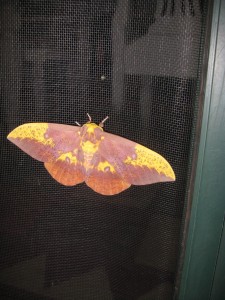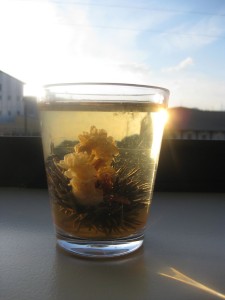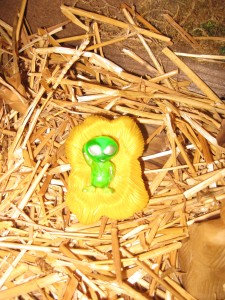Vonnegut Birthed THE BONE TRENCH
When I was in high school, I favored the library located in the small strip center that also held the hardware store where I bought tomato plants, thinking them to be flowers . . . but that’s another story. The library was cozy, the line of shelves beginning as soon as you walked in the door. From my weird spatial perspective, the books were arranged backwards—the cataloguing began at the front desk and the fiction authors whose names began with letters from the end of the alphabet were closest to the door. I remember this because I’ll never forget squatting on the floor and finding on the bottom shelf Kurt Vonnegut.
By that time, I was in the twelfth grade, participating in the Advance Placement English class. Part of the deal with that class was earning extra credit for reading books not on the required reading list. Can you believe that? They gave you extra credit for reading. Much of my life, reading had been something I was doing when I should’ve been “outside getting fresh air.” Or making my bed. Or eating. I was a pig in slop in that library, doing my favorite thing, fully sanctioned.

So, anyway, I found Vonnegut. His were small books, at least relative to Moby Dick, which we read in English class, so I checked out a couple of them. Slaughterhouse Five, of course, and either Cat’s Cradle or Breakfast of Champions, I don’t remember. The class had an approved “Outside Reading” list; anything off that list had to be approved by the teacher as meeting certain unnamed standards. I took my finds to school for perusal and acceptance. This had not theretofore been an issue. It was this time.
The teacher took my request under advisement. She was older, in real life, I mean—looking back from an adult perspective, you realize everyone seemed older when you were young. But this teacher’s hair was gray, her face heavily wrinkled, her hands trembling. She accepted the books from my hand, and, corralling stray wisps of hair back into the bun that swept dramatically from her forehead, she said she’d let me know.

Several days later I received her verdict. My choice was not conventional, she said (imagine that!), but she believed it could be approved. The language, the scenes—the book contained objectionable material; I, however, was probably mature enough to handle it. The book simply was not her cup of tea, she sniffed, but she didn’t want to discourage me from reading works that tried new approaches, even those that hovered on the edge of literature.
The year was 1975. Slaughterhouse Five came out in 1970. It was not yet a classic, to say the least; no one had yet put it on multiple “Best Of” lists. I was left with the distinct impression the teacher hadn’t even read it; hence, the delay of several days. But thanks to this open-minded teacher, I was an early reader and fan.
I do have one complaint: I blame Vonnegut for creating my lifetime inability to distinguish fantasy from plain ol’ literature. Maybe this defect was birthed years earlier when my mother read us the Narnia Chronicles as bedtime stories, us girls snuggled in the covers, me hating to see the white space that signaled the chapter’s end. Later in my senior year, I had my Asimov phase, and one summer I devoured Lewis’s Space Trilogy; my mother talked so much about Perelandra, I had to read it myself. In college it was Lord of the Rings; later, Hitchhikers Guide to the Galaxy and every Arthurian legend book written. I came late to American Gods and the Outlander series, but arrive I did.

None of these classic fantasies did I consider “fantasy.” They were just great books, no different from Moby Dick or William Faulkner, for that matter. So I guess it’s not surprising I never considered I was writing a fantasy when I wrote my own novel The Bone Trench. Yeah, the central characters are Mother Mary and her guardian angel Little c, both of whom have superpowers. Also Mary’s son Jesus, who grumbles about having stripped himself of his superpowers prior to his return to earth. And while the book is Urban Fantasy set in real-life Memphis, The Bone Trench’s Memphis has the phantasmagoric qualities of Tim Burton’s Gotham City.
As you can tell, these early reads also made the combination of fantasy and spirituality I created in The Bone Trench feel natural. Hell, C.S. Lewis was primarily a religion writer. Furthermore, to get a bit metaphysical, who’s to say the world doesn’t exist as the fantasy books portray it? Don’t lock me up, but where actually does the line between fantasy and reality run? I’ve told several people The Bone Trench is fantasy, only to get the response, “Well, I guess.”

So, of all the legacies Kurt Vonnegut left the world, in a way The Bone Trench is another one. In any event, I thank you, Mr. Vonnegut, for leaving me free to write whatever in this—or any—world I feel like writing.
AP English reading list, definition of fantasy, fantasy as literature, Kurt Vonnegut, Slaughterhouse Five, The Bone Trench, urban fantasy
Susanne
Thank goodness for Vonnegut. I haven’t read one of his books in donkey’s years but came across an incredible short story of his written almost completely in dialogue. Makes me want to go back and reread his novels. I find the distinction between “literature” and genre fiction a murky line. I have recently found a mystery writer named James Lee Burke whose book Rain Gods is so lyrical in spots that I reread sentences and paragraphs out loud because they were incredibly poetic.
This theme of reality and fantasy turned up in another writer’s post today. Have you read http://mythsofthemirror.com/2015/12/19/yes-virginia-there-is-a-santa-claus/?
Thank goodness for open-minded English teacher’s. Look where it lead! Merry Christmas, Ellen.
Ellen Morris Prewitt
I love James Lee Burke! He is incredible at evoking an atmosphere. Is Rain Gods set out west or down here in Louisiana? I like all of his series, but my heart is drawn to the New Iberia and New Orleans novels. 🙂 I will check out the link. And, yes, I’ve never given Mrs. Baker (I think that was her name) full credit. She was an imperious old coot, but she also made me love Moby Dick. Merry Christmas to you as well!
D. Wallace Peach
Ah yes, the difficulty distinguishing reality and fiction/fantasy is a common affliction among writers, and yet I have to keep asking myself is there a difference?
Ellen Morris Prewitt
The line wavers, doesn’t it? When I read that Gabriel Garcia Marquez was influenced by William Faulkner, I thought, no wonder. It’s only a hop, skip and a jump from Faulkner’s surrealism to GGM’s magical realism. Of course, I put down GGM’s memoir because I didn’t want to know the reality from which the magic sprang, too much like knowing the magician’s trick: where’s the fun in that? Thanks for stopping by and I enjoyed your post!
rdestefanis
And all along I thought it was Columbian Gold or Panama Red………….
Ellen Morris Prewitt
I thought about you when I was reading this!! I considered putting in an aside: (no, Rick, it wasn’t’ something I was smoking at all—it was Vonnegut!)
Luanne
Where’s the like button?! I was a Vonnegut groupie in high school. He was my absolute favorite, and we.got.to.read.his.books.for.class. You heard that right. We had these cool one semester elective classes with the cool English teacher. One was American Ethnic Writers. Another was American Contemporary Fiction with VONNEGUT. Woohoo. My absolute favorite was God Bless You, Mr. Rosewater. And I loved Cat’s Cradle. This was 1971-1973! I’ve lived on that old love all these years and have not gone back and reread them. I wonder if I should. I know I’m going to LOVE The Bone Trench! I can’t wait!
Ellen Morris Prewitt
Oh, that is so cool. And look how accepting the teachers were of Vonnegut right out of the shoot. Was that in Michigan? I haven’t reread him either, and though this post makes me want to do so, I’m always a bit leery of re-visiting old loves. I am so glad I reminded you of a literary love!
Chris Sarantopoulos
And thus we see how imperative good teachers are for an individual’s path in life.
Ellen Morris Prewitt
How true! I still remember the sheet with the list of approved books on it and my check marks beside each book, almost all of them checked off. I found Thorton Wilder’s Theophilus North the same way as Vonnegut, and thus learned that literature could also be very funny. I’ve never looked back.